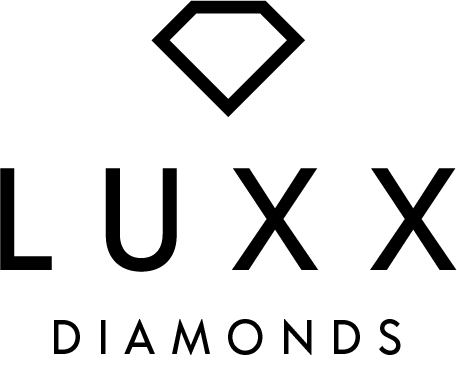The 4 C'S
A diamonds value, rarity and beauty are determined by factors that are commonly known as the 4 Cs, these are: colour, clarity, carat and cut. Before deciding on purchasing your diamond jewellery, it is important to understand why two diamonds that may look exactly the same are actually valued differently. Before buying a diamond ring or jewellery, this blog will help you to understand the 4 Cs in more detail and will be useful when studying the diamond's brilliance, beauty and quality.
COLOUR
Diamonds naturally vary in colour with the majority of them on the market being sold as near colourless. At Luxx Diamonds, we use the GIA (Gemological Institute of America) scale of colour. On this scale, diamond colour is graded from D, which has the least colour, through the alphabet to Z, which has a light yellow colour. Truly colourless diamonds (D) are treasured for their rarity.
Diamonds generally have subtle differences which may not be visible to the naked eye. If you would prefer to see the difference for yourself, visit Luxx Diamonds and speak to one of our diamond specialists. They will allow you to compare diamonds side by side.
Due to the rise in fashion-led trends, coloured diamonds are becoming increasingly more popular and valuable such as the Chocolate Diamonds by Le Vian. At Luxx Diamonds, we have a wide range of various coloured diamonds including black diamonds, which are natural diamonds that have been subjected to specialist treatments to enhance the depth of colour and contrast.
CLARITY
Inclusions are ranked on a scale of perfection called clarity, which means that the fewer inclusions a diamond has, then the greater the clarity and thus making it more valuable. The clarity scale is a reminder that it is fairly common for diamonds to have natural flaws and they are rarely perfect. These are known as nature’s ‘fingerprints’ or ‘birthmarks and they can look like tiny crystals, clouds or feathers. The beauty of a diamond will not be greatly affected by inclusions as they can be hidden by the setting or the mount. There are two main bodies that set these scales, the GIA (Gemmological Institute of America) and the CIBJO (International Confederation of Jewellery Silverware and Diamonds)
At Luxx Diamonds we use the International Grading Scale developed by CIBJO, which is the oldest representative organisation in the jewellery industry. CIBJO measures the visibility of inclusions using a single lens magnifying glass called a loupe.
The CIBJO scale ranks diamonds from Loupe Clean through to P (Piqué - French for picked): Loupe Clean diamonds are flawless or internally flawless and very rare and valuable. Diamonds that have very, very slight inclusions, are graded VVS1-VVS2 and, even with a loupe, the inclusions can be difficult to see.
Diamonds that are very slightly included are graded as VS1-VS2. Diamonds that are graded S1-S2 feature only slight inclusions which may or may not be visible to the naked eye. Any diamond that has inclusions that is visible to the naked eye, are P1-P3 although P1 will have fewer inclusions than P3.
CARAT
Diamonds are measured in carats, which take into account the weight, rather than the size. Outsized carat weights are rarer and more precious. Carats are split into points where 100 points are equal to one carat.
* ½ carat diamond – 50 point or 0.50 carat diamond
* ¼ carat diamond – 25 point or 0.25 carat diamond
When there is more than one diamond on a piece of jewellery such as on a diamond cluster ring or a three stone pendant, the stones are weighed together rather than individually.
The carat weight does not reflect the size of a diamond. Therefore it may appear bigger but may weigh less, so it is worth taking your time to absorb its splendour.
When buying diamond jewellery, the most appealing factor is likely to be the carat weight of a diamond. However it is important to remember that colour, clarity and cut will also determine the value of a diamond.
CUT
The cut of a diamond refers to their proportion and finish. Skilled craftsmen transform a rough diamond to a gleaming polished diamond by polishing tiny facets into the rough stone. Facets are the flat, polished surfaces on a diamond. Well cut and proportioned facets on a diamond will make good use of light, allowing it to be dispersed and reflected from one facet to another, releasing the diamond’s brilliance.
A diamond can be cut in various ways; to be heavier, thus gaining more value, or to hide or minimalise inclusions. Symmetry, proportion and how polished a diamond is will all determine the quality of the cut. These can vary from diamond to diamond, so the shape and the quality should be taken into consideration.
There are three main cutting styles each has its own facet arrangements:
*Brilliant cut
*Step cut
* Mixed cut


